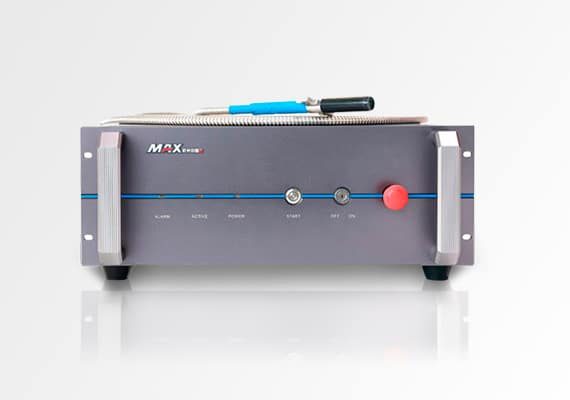
Using well-known brand laser generators (Raycus, JPT, Reci, Max, IPG), a high photoelectric conversion rate ensures the laser power and makes the welding effect better. AccTek can design different configurations to meet customer needs.
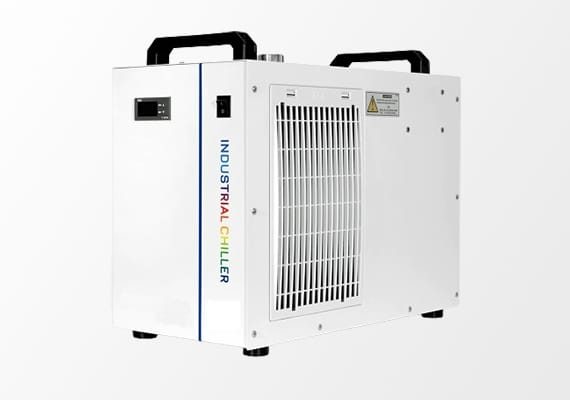
The industrial water cooler ensures the heat dissipation of the core optical path components, allowing the welding machine to provide consistent welding quality and helping to improve the overall quality of the weld itself. It can also increase welding output by reducing the downtime of fiber laser welding machines. In addition, an excellent industrial water cooler can also prolong the service life of the laser welding machine.
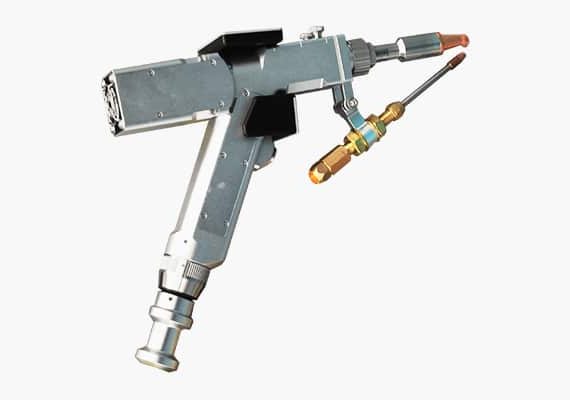
The laser welding gun is ergonomically designed, light in shape, comfortable to hold, and easy to control and operate. The hand-held welding gun is easy to hold and can be operated at any angle, making welding more convenient and flexible.
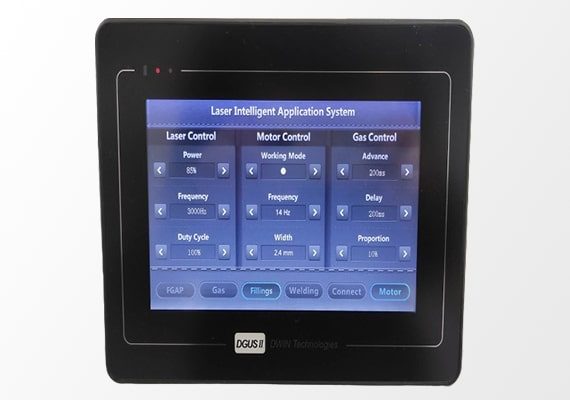
AccTek provides high-performance, intuitive, and easy-to-use operating systems. It expands the tolerance range and weld width of machined parts and provides better weld formation results. The operating system supports Chinese, English, Korean, Russian, Vietnamese, and other languages.
| Model | AKH-1500 | AKH-2000 | AKH-3000 | AKH-6000 |
| Laser Power | 1500W | 2000W | 3000W | 6000W |
| Laser Type | Fiber Laser | |||
| Range of Adjustable Power | 1-100% | |||
| Laser Wavelength | 1080nm | |||
| Way of Working | Continuous/Modulation | |||
| Speed Range | 0-120mm/s | |||
| Repeat Precision | ±0.01mm | |||
| Welding Gap Requirements | ≤0.5mm | |||
| Cooling Water | Industrial Thermostatic Water Tank | |||
| Material | Welding Form | Thickness (mm) | Laser Power (W) | Welding Speed (mm/s) | Defocus Amount | Protective Gas | Blowing Method | Flow (L/min) | Welding Effect |
|---|---|---|---|---|---|---|---|---|---|
| Carbon Steel (Q235B) | Butt Welding | 0.5 | 1500 | 80~90 | -1~1 | Ar | Coaxial/Paraaxial | 5~10 | Welded Completely |
| Butt Welding | 1 | 1500 | 70~80 | -1~1 | Ar | Coaxial/Paraaxial | 5~10 | Welded Completely | |
| Butt Welding | 1.5 | 1500 | 50~60 | -1~1 | Ar | Coaxial/Paraaxial | 5~10 | Welded Completely | |
| Butt Welding | 2 | 1500 | 30~40 | -1~1 | Ar | Coaxial/Paraaxial | 5~10 | Welded Completely | |
| Butt Welding | 3 | 1500 | 20~30 | -1~1 | Ar | Coaxial/Paraaxial | 5~10 | Welded Completely | |
| Stainless Steel (SUS304) | Butt Welding | 0.5 | 1500 | 90~100 | -1~1 | Ar | Coaxial/Paraaxial | 5~10 | Welded Completely |
| Butt Welding | 1 | 1500 | 80~90 | -1~1 | Ar | Coaxial/Paraaxial | 5~10 | Welded Completely | |
| Butt Welding | 1.5 | 1500 | 60~70 | -1~1 | Ar | Coaxial/Paraaxial | 5~10 | Welded Completely | |
| Butt Welding | 2 | 1500 | 40~50 | -1~1 | Ar | Coaxial/Paraaxial | 5~10 | Welded Completely | |
| Butt Welding | 3 | 1500 | 30~40 | -1~1 | Ar | Coaxial/Paraaxial | 5~10 | Welded Completely | |
| Brass | Butt Welding | 0.5 | 1500 | 70~80 | -1~1 | Ar | Coaxial/Paraaxial | 5~10 | Welded Completely |
| Butt Welding | 1 | 1500 | 50~60 | -1~1 | Ar | Coaxial/Paraaxial | 5~10 | Welded Completely | |
| Butt Welding | 1.5 | 1500 | 40~50 | -1~1 | Ar | Coaxial/Paraaxial | 5~10 | Welded Completely | |
| 1-3 Series Aluminum Alloys | Butt Welding | 0.5 | 1500 | 80~90 | -1~1 | Ar | Coaxial/Paraaxial | 5~10 | Welded Completely |
| Butt Welding | 1 | 1500 | 70~80 | -1~1 | Ar | Coaxial/Paraaxial | 5~10 | Welded Completely | |
| Butt Welding | 1.5 | 1500 | 50~60 | -1~1 | Ar | Coaxial/Paraaxial | 5~10 | Welded Completely | |
| Butt Welding | 2 | 1500 | 30~40 | -1~1 | Ar | Coaxial/Paraaxial | 5~10 | Welded Completely | |
| 4-7 Series Aluminum Alloys | Butt Welding | 0.5 | 1500 | 60~65 | -1~1 | Ar | Coaxial/Paraaxial | 5~10 | Welded Completely |
| Butt Welding | 1 | 1500 | 40~50 | -1~1 | Ar | Coaxial/Paraaxial | 5~10 | Welded Completely | |
| Butt Welding | 1.5 | 1500 | 30~40 | -1~1 | Ar | Coaxial/Paraaxial | 5~10 | Welded Completely |
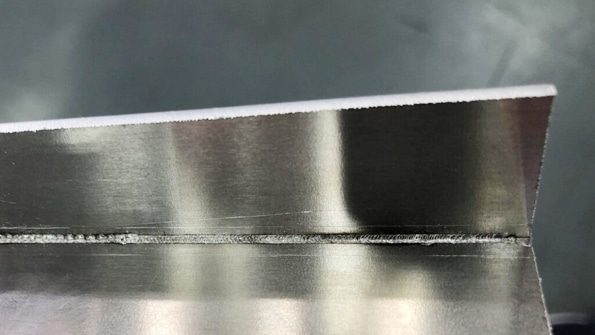
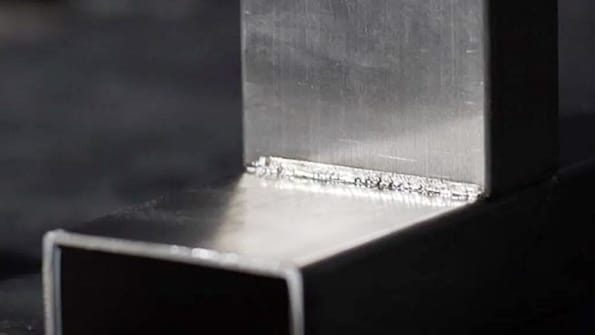
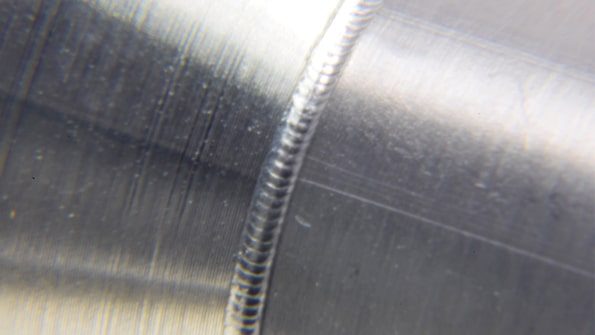
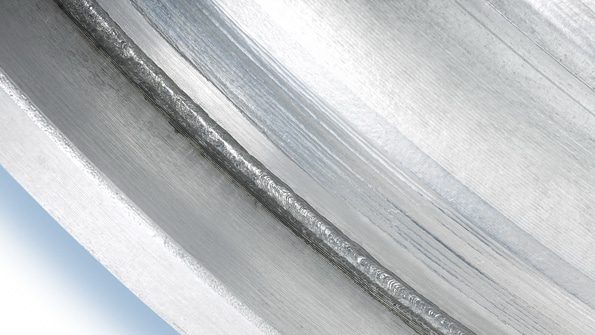
The 1500w laser welding machine cost can vary widely based on several factors including brand, quality, features, and other options or accessories that come with the machine. Generally speaking, a 1500w handheld laser welding machine can cost anywhere from $3,000 to $4,000. And with additional functions, higher precision, and automated laser welding machines, the price will be higher.
It is important to note that prices are subject to change due to market fluctuations, technological advancements, and other factors, and it is recommended to check with manufacturers and suppliers for the most accurate and up-to-date pricing information. Other costs to consider when purchasing a laser welding machine include installation, training, maintenance, and any necessary accessories or consumables. In addition, the availability of local service and technical support may also affect the overall cost.
AccTek Laser is a professional laser welding machine manufacturer. If you want to get exact price information for a 1500w laser welding machine, you can contact us. We can also provide details on pricing and any additional costs associated with the machine, such as shipping, installation, or training. Additionally, our engineers will advise you on pricing and options and recommend the best laser welding machine for your application and budget.
The power consumption and operating costs of a 1500w laser welding machine can vary widely based on several factors, including the specific machine, its efficiency, and how long and how often it is used. Here are some considerations regarding power consumption and operating costs:
Please note that the above calculations are estimates and actual operating costs may vary depending on the shop in your area and any additional power requirements for laser welding machine auxiliary systems. It is recommended to consult the specific laser welding machine manufacturer or supplier you are interested in for accurate information on power consumption and operating costs, as they may provide more detailed specifications and insights based on their products.
The 1500w laser welding machine can effectively weld a variety of metal materials. Laser welding is a versatile welding process that can be used to join different metals and alloys. The choice of material can depend on various factors such as the type of laser generator used, the specific welding configuration, and the desired quality of the weld. Here are some common metal materials that can be effectively welded with a 1500w laser welding machine:
It is important to note that different metallic materials have unique properties and considerations for laser welding. Factors such as material thickness, reflectivity, thermal conductivity, and the presence of coatings or surface treatments affect the welding process and may require specific adjustments or techniques. Before attempting to weld specific metallic materials, it is advisable to refer to the manufacturer’s guidelines, seek professional advice, or perform welding tests to ensure the best parameters and techniques for achieving a high-quality weld.
The certification or compliance standards that a 1500w laser welding machine needs to meet may vary depending on factors such as the country in which it is used and specific industry or application requirements. Here are some common certification and compliance standards that laser welding machines may be required to comply with:
It is important to note that specific certification requirements may vary depending on the intended use and the regulations of the country or region where the machine will be used or sold. Manufacturers or suppliers of laser welding machines can provide information about the certifications and standards their machines comply with, or provide guidance on meeting specific requirements. When considering purchasing a laser welding machine, it is advisable to inquire about the machine’s compliance with relevant standards and certifications to ensure it meets the necessary safety and quality requirements for your particular application.
The key features and functions of 1500w laser welding machines vary by specific model and manufacturer. However, there are some common features and functions that you may find in a typical 1500w laser welding machine:
These features and functions are intended to provide a general overview, the actual capabilities of the laser welding machine may vary. When considering a specific 1500w laser welding machine, it is advisable to review the manufacturer’s specifications and documentation for details on the machine’s features, capabilities, and any other options or accessories that may be available.
Yes, the 1500w laser welding machine can support different welding techniques, including spot welding, seam welding, and continuous welding. The specific welding techniques that can be performed depend on the design of the machine, its capabilities, and the control system it incorporates. The following are some common welding processes that a 1500w laser welding machine can achieve:
The ability to perform these different welding techniques may depend on factors such as the laser beam delivery system, control system capabilities, and availability of appropriate fixtures or automation. Advanced laser welding machines typically offer flexibility in terms of adjustable welding parameters, scanning patterns, and laser beam movement control, allowing for precise and versatile welding operations.
While a 1500w laser welding machine can support these different welding techniques, the specific parameters and settings for each method may vary, depending on factors such as material type, thickness, and desired weld quality. Manufacturers often provide guidelines and recommendations for optimizing welding parameters for different techniques and materials, which should be followed for successful welding results.
Like any precision equipment, a 1500w laser welding machine requires regular maintenance to ensure optimum performance and longevity. Although, specific maintenance requirements and repair needs will vary by manufacturer, model, and conditions of use. However, here are some semi-maintenance considerations and potential repair needs for laser welding machines:
Please note that maintenance requirements and repair needs may vary depending on the specific machine, components, and manufacturer’s recommendations. Refer to your machine’s owner’s manual and service documentation, and follow the manufacturer’s guidelines for proper maintenance and repair procedures.
Yes. Usually, 1500w laser welding machines provide adjustable power settings to meet various welding requirements. The ability to adjust the power output is essential as it allows the operator to optimize the welding process for different materials, thicknesses, and desired welding characteristics.
Laser welding machines provide control over power settings through their user interface or control panel. Specific interfaces may vary by machine manufacturer and model. It could be a button, a knob, or a digital display where you can select and adjust the power level of your machine.
Adjusting the power setting controls the intensity of the laser beam, which directly affects heat input and penetration during welding. Typically, lower power settings are generally suitable for thinner materials or where a more precise and controlled weld is required, and higher power settings are generally used for thicker materials or where deeper weld penetration is required.
Specific power adjustment capabilities may vary by laser welding machine manufacturer and model. Some machines may offer the option of continuous power adjustment, allowing the user to select any desired power level within a specified range. Other machines may have predefined power levels or presets that can be selected based on welding requirements.
If you want to determine the specific power setting and adjustment capabilities of the 1500w laser welding machine, it is recommended to consult the user manual of the machine or contact the manufacturer directly. They will be able to give you details about the range of power adjustments available for your particular machine model.
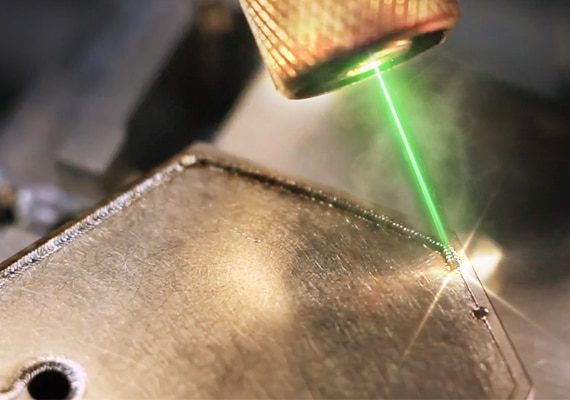
Simple preset selection ensures consistently high-quality laser welding results. The presets include wobble welding to accommodate wider seams and poorly assembled parts. Operators can instantly switch between different presets to easily handle multiple material thickness combinations.
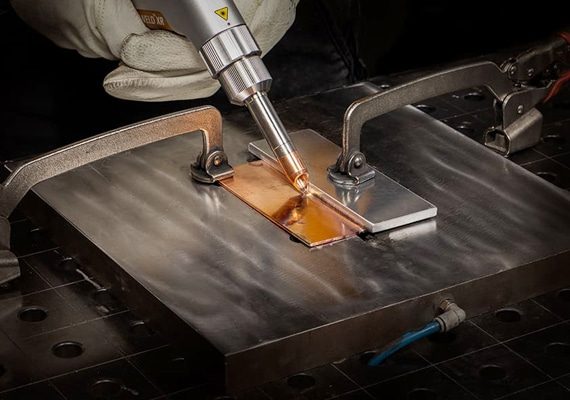
The machine is ergonomic, compact, and proven to be the most comfortable and easy-to-use laser gun. The 2-step trigger and part contact sensor increase operator safety. It can quickly switch from standard laser welding to wire welding, making the operation simple and fast.
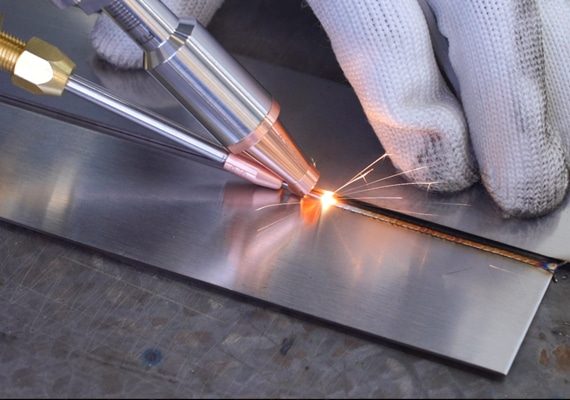
The clear logo on the rear of the machine makes connection easy and fast. Plug in the power cord and gas connections, attach the clips to the work surface, and you’re ready to start your welding operation. The ethernet computer connection provides access to advanced parameter settings for fine-tuning and saving welding process parameters.
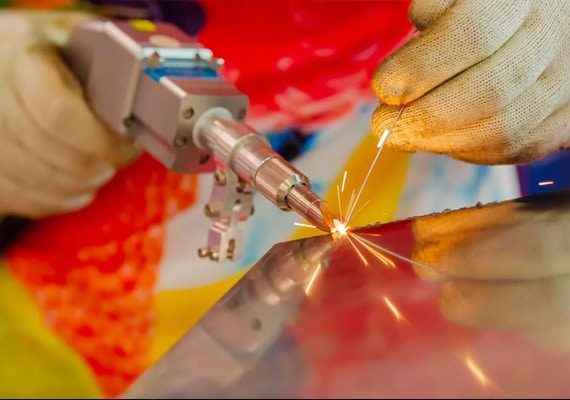
Key switch control to protect the system from unauthorized welding operations. The emergency stop button can ensure that the machine can be shut down immediately when there is a problem. Safety interlocks verify the integrity of laser delivery to the welding gun.
4 reviews for 1500W Laser Welding Machine
Emma –
Effortlessly handles intricate welds. Reliable performance, minimal maintenance. A must-have for welding workshops.
Ruth –
Impressive precision and reliability. Boosts productivity in our manufacturing process. Great investment for our business.
Youssef –
Streamlines our welding process. Easy to operate, delivers high-quality welds consistently. A valuable addition to our workshop.
Huy –
Efficient and user-friendly. Perfect for various welding applications. Enhances productivity and accuracy.